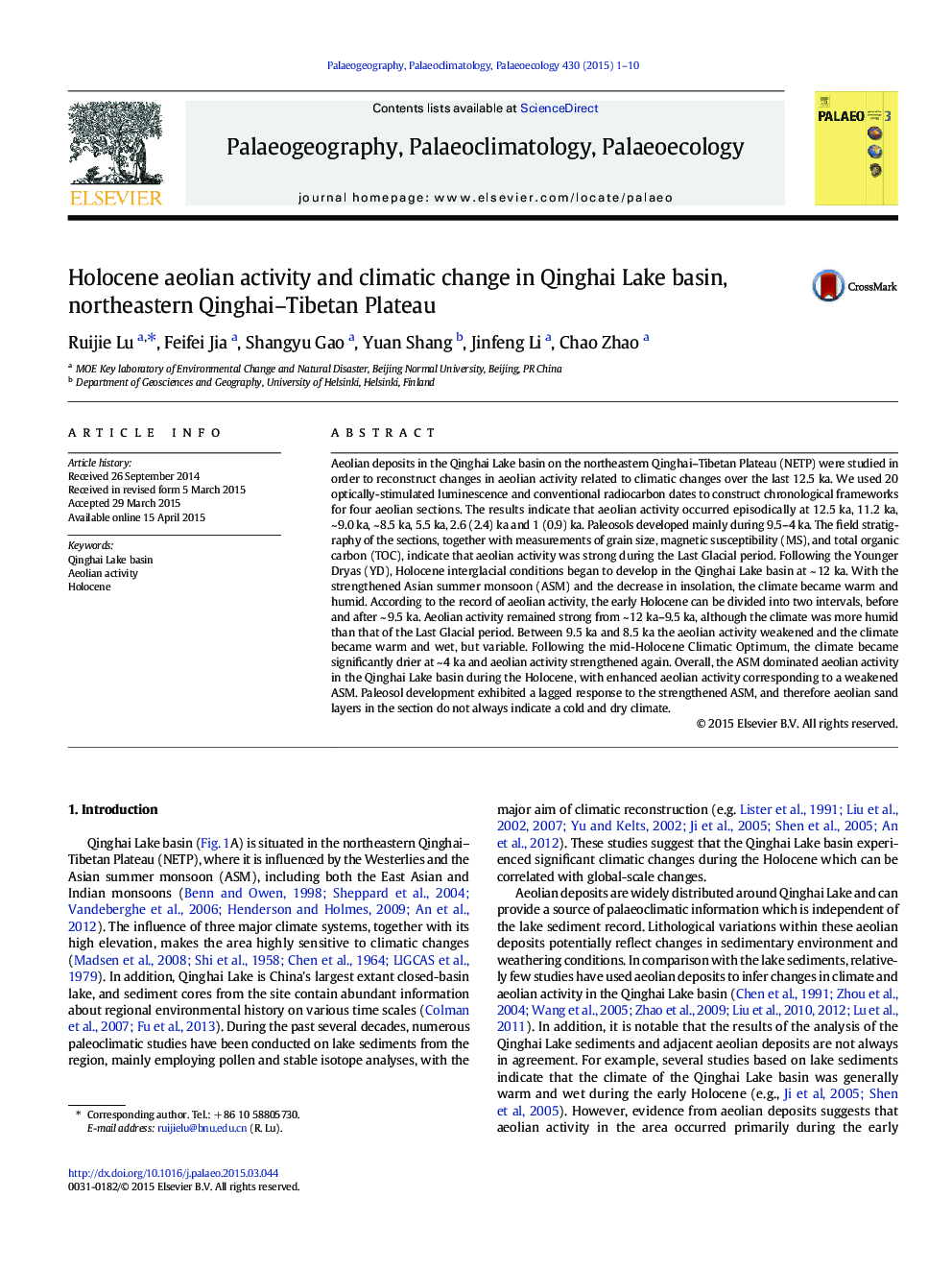| کد مقاله | کد نشریه | سال انتشار | مقاله انگلیسی | نسخه تمام متن |
|---|---|---|---|---|
| 4465939 | 1622160 | 2015 | 10 صفحه PDF | دانلود رایگان |

• The ASM dominated aeolian activity in the Qinghai Lake basin during the Holocene.
• Aeolian activity occurred at 12.5, 11.2, ~ 9.0, ~ 8.5, 5.5, 2.6 (2.4) and 1 (0.9) ka.
• The early Holocene can be divided into two intervals — before and after ~ 9.5 ka.
• A shift to a drier climate with strengthened aeolian activity occurred at ~ 4 ka.
Aeolian deposits in the Qinghai Lake basin on the northeastern Qinghai–Tibetan Plateau (NETP) were studied in order to reconstruct changes in aeolian activity related to climatic changes over the last 12.5 ka. We used 20 optically-stimulated luminescence and conventional radiocarbon dates to construct chronological frameworks for four aeolian sections. The results indicate that aeolian activity occurred episodically at 12.5 ka, 11.2 ka, ~ 9.0 ka, ~ 8.5 ka, 5.5 ka, 2.6 (2.4) ka and 1 (0.9) ka. Paleosols developed mainly during 9.5–4 ka. The field stratigraphy of the sections, together with measurements of grain size, magnetic susceptibility (MS), and total organic carbon (TOC), indicate that aeolian activity was strong during the Last Glacial period. Following the Younger Dryas (YD), Holocene interglacial conditions began to develop in the Qinghai Lake basin at ~ 12 ka. With the strengthened Asian summer monsoon (ASM) and the decrease in insolation, the climate became warm and humid. According to the record of aeolian activity, the early Holocene can be divided into two intervals, before and after ~ 9.5 ka. Aeolian activity remained strong from ~ 12 ka–9.5 ka, although the climate was more humid than that of the Last Glacial period. Between 9.5 ka and 8.5 ka the aeolian activity weakened and the climate became warm and wet, but variable. Following the mid-Holocene Climatic Optimum, the climate became significantly drier at ~ 4 ka and aeolian activity strengthened again. Overall, the ASM dominated aeolian activity in the Qinghai Lake basin during the Holocene, with enhanced aeolian activity corresponding to a weakened ASM. Paleosol development exhibited a lagged response to the strengthened ASM, and therefore aeolian sand layers in the section do not always indicate a cold and dry climate.
Journal: Palaeogeography, Palaeoclimatology, Palaeoecology - Volume 430, 15 July 2015, Pages 1–10